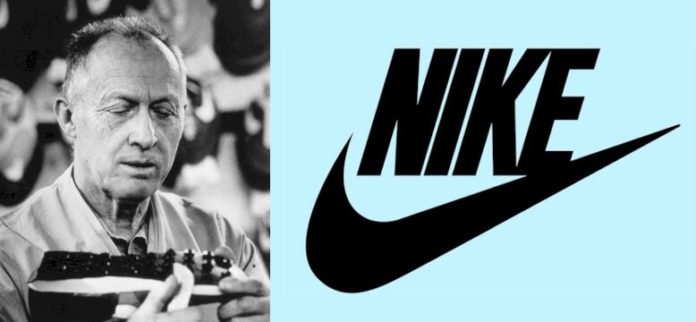This is a look at the Nike Logo and some history behind the business.
The Nike swoosh symbol is one of the world’s simplest but most effective branding visuals. Along with athletes and sports followers, millennials like buying products bearing the Nike logo. In fact, 62% of the sports shoe market belongs to Nike. The swoosh image has a life of its own as it’s already patented and extremely popular.
Nike is a United States corporation with headquarters in Washington County in the state of Oregon. In 1964 the company was founded by Phil Knight and Bill Bowerman. The company was initially known as Blue Ribbon Sports but switched to the present Nike name in 1971.
Nike has over 44,000 employees around the globe, and its total assets are about $15 billion. The company has more than 700 outlets worldwide and sells a wide variety of sports apparel with creative packaging. Its most popular athletic shoes bear the Nike emblem.
The Nike Logo is, in some way, the best type of emotional communication. Through its slogan “Just Do It” and visual elements, the company has endeavored to promote the psychological impact of its products.
The Nike Logo’s Evolution
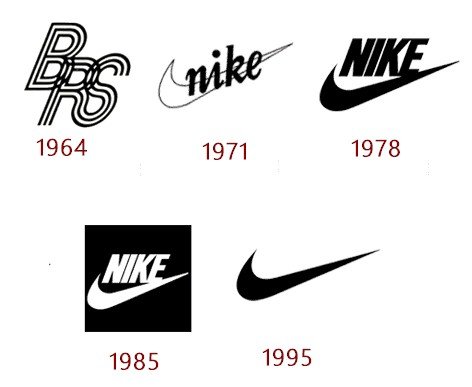
The Nike emblem is one of the most iconic and popular logos in history. The swoosh is so famous that most of the company’s recent ads omit the Nike name altogether and use just the logo, often alongside their tagline “Just Do It.”
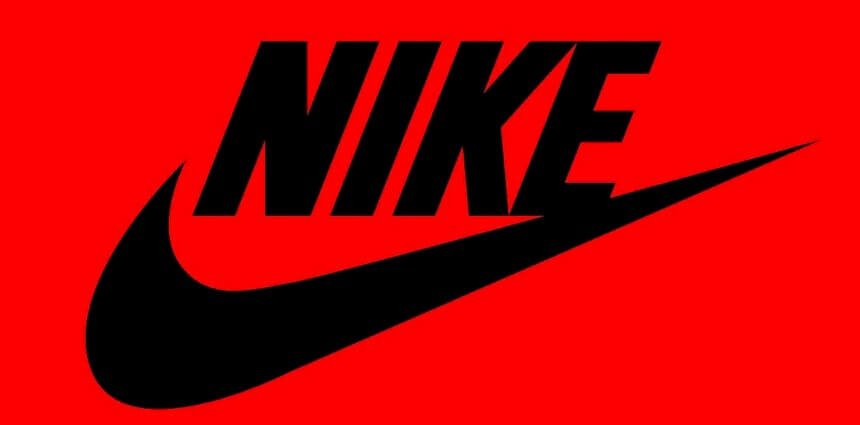 The Nike logo was designed by Carolyn Davidson, a graphic design student attending Portland State University, where Phil Knight, one of Nike’s founders, was an accounting professor. For her troubles, Carolyn Davidson was paid just $35! Despite being a simple but famous logo, the swoosh symbol has changed and evolved since it was first conceived.
The Nike logo was designed by Carolyn Davidson, a graphic design student attending Portland State University, where Phil Knight, one of Nike’s founders, was an accounting professor. For her troubles, Carolyn Davidson was paid just $35! Despite being a simple but famous logo, the swoosh symbol has changed and evolved since it was first conceived.
1971
Carolyn Davidson’s first designs didn’t catch Knight’s eye, but he still decided to use them, accepting that they’d perhaps win him over in time.
1978
Futura Bold replaced the cursive serif typeface in 1978. The new font has a far more geometric shape, and the edge of “E” runs into the swoosh’s tail. The style of kerning is particularly intriguing, with different spacing between the letters.
1985
For a brief period, the Nike logo was inside a square. But this didn’t last long as it was during this period that Nike started endorsing popular athletes, with Michael Jordan the most prominent of the lot.
By the late 1980s, Nike introduced its motto “Just Do It.” Legend has it that the slogan was inspired by the phrase “let’s do it,” which were the last words uttered by death row killer Gary Gilmore before his execution.
1995
Nike’s current logo, the lone swoosh, was adopted in 1995. Today, the emblem is understood to stand for athleticism, speed, and quality in clothing design. Frequently mentioned as one of the world’s most recognizable logos, the Nike symbol makes a solid case for simplicity.
The Nike Logo Design Elements
 The Nike Logo is one of the most basic logo designs. The simple swoosh symbol makes the logo a memorable business sign. The company heavily leans on this sign for its brand identity.
The Nike Logo is one of the most basic logo designs. The simple swoosh symbol makes the logo a memorable business sign. The company heavily leans on this sign for its brand identity.
Nike Logo Shape: The swoosh symbol is the shape of a wing of Nike, the Greek Goddess of Victory. So, Carolyn Davidson had the shape of the wing in mind, thanks to the goddess.
Nike Color: The swoosh symbol has appeared in a variety of colors over the years. For many years, it appeared in pitch black color. Then, a plain orange hue was made the brand’s color.
Nike Logo Font: Nike’s logo is a sign. But the motto “Just Do It” sometimes appeared above the logo. Sometimes the company name appears on the logo as well. The text uses the elegant Futura Bold font. The Nike name is in bold letters, which helps to advertise the brand.
The letter K is slightly slanted to make the company name distinctive and visible. The name “Nike” appeared in Futura Bold on top of the logo until 1995.
The company name “Nike” was removed from the logo in 1995. The swoosh was the only logo design element left and is the company’s sole identifier.
The History of Nike
In 1964, Phil Knight and Bill Bowerman came together to form a company known as Blue Ribbon Sports. From a simple handshake, each man invested $500 to import the Japanese shoe Tiger and sell them in America.
At the time, most athletes the world over preferred German shoe brands. The pair hence established Blue Ribbon Sports Inc., which would later change its name to the successful sports apparel company we all know as Nike.
Nike’s success story is worth listening to by anyone who’s interested in sports gear or how companies run. As such, here’s an outline to help you get the lowdown on this successful sportswear firm and how its story began.
The Start of Nike
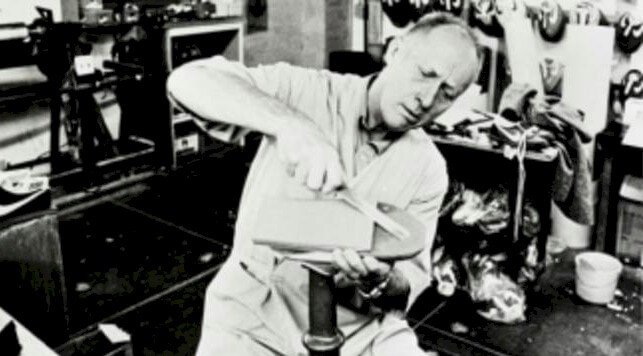
Bill Bowerman loved running and enjoyed improving his athletes’ performance. He was a nationally recognized track and field trainer at the University of Oregon. Phil Knight was an athlete and was in Bowerman’s track and field program. Then he went on to earn an MBA degree from Stanford University.
Both Knight and Bowerman thought that shoe technology needed improving. Knight even came up with a paper that detailed how quality shoes made in Japan could compete with the world’s top brands at the time.
Bowerman actively developed comfortable, affordable, and safe shoes to improve his athletes’ performance. While his initial models flopped, Knight’s paper helped him turn his dream into reality.
Knight floated his ideas to several investors but eventually had to work by himself. When he offered his ideas to his old coach, Bowerman suggested that they both team up and establish a partnership.
A Maturing Business
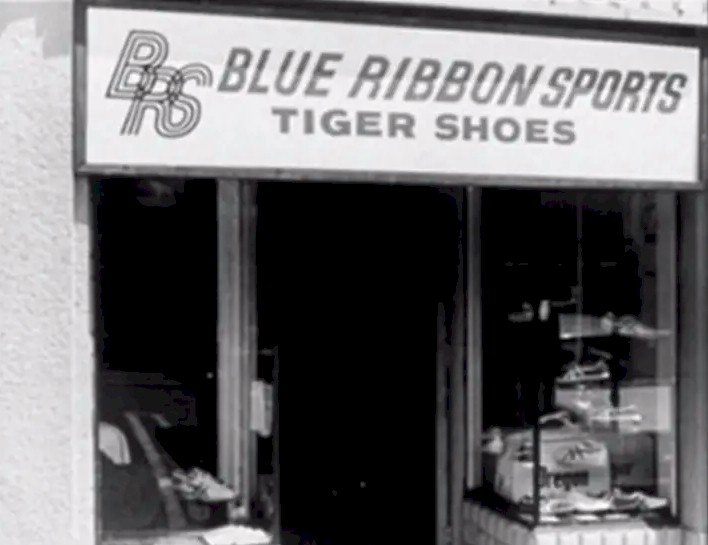 As Blue Ribbon Sports began to grow, it had many mail-order sales and its own storefront. Then it started to dawn on the founders that their future might lie in manufacturing, in addition to distribution and direct sales. Therefore, they took their first steps towards establishing the shoe manufacturing company, Nike. At the same time, they also launched the famous Nike swoosh symbol.
As Blue Ribbon Sports began to grow, it had many mail-order sales and its own storefront. Then it started to dawn on the founders that their future might lie in manufacturing, in addition to distribution and direct sales. Therefore, they took their first steps towards establishing the shoe manufacturing company, Nike. At the same time, they also launched the famous Nike swoosh symbol.
It’s believed that there are two critical factors to their eventual success. The first one was that during that time, Knight and Bowerman kept experimenting with shoe technology. At no point did they stop deliberating on how shoes could be improved.
An athlete’s performance would automatically improve when the best athletic shoes were working at their peak. Thus, Bowerman and Knight were able to create a number of new designs, which athletes used at local trials in Oregon.
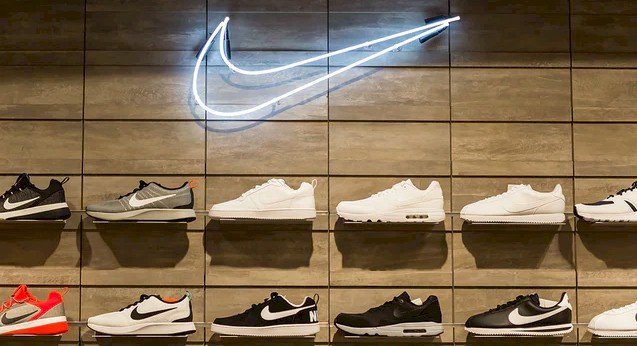
Secondly, Nike’s eventual success is attributed to how people think of the brand today, with world-famous sports icons like Michael Jordan and Roger Federer endorsing the shoes. Nike knew that their new footwear and technology needed the endorsement and promotion of athletes.
In the beginning, the company managed to secure the promotion and endorsement of Steve Prefontaine, who performed marvelously well in their shoes. Wearing the Nike pair of shoes, Prefontaine performed exceptionally well at the 1972 Munich Olympics. He also went on to be featured in Sports Illustrated magazine.
The Ups and Downs of Nike
In the 1980s, Nike tasted some highs and lows. Aerobics became a massive phenomenon, and that sort of movement required specific shoes. Nike could have grabbed the opportunity to manufacture and sell aerobics shoes, but they missed that opportunity by a mile.
Fortunately, Nike got the chance to redeem itself pretty quickly. They designed and released their latest “airbag” technology, featuring cool, stylish designs as well as clear soles. At the same time, they introduced the hallowed “Bo Knows” ads and the cross-training shoes. The 1980s was also when the “Jordan Air” brand associated with Nike grew. Nike’s Jordan Air is one of the most popular and most enduring brands in history.
The Expansion of Nike
In the 1990s through to the 2000s, Nike started to branch out to soccer, golf, clothing, and other fields in sports. Today, you can see the Nike logo everywhere, from fitness technology to casual wear to workout apparel and, of course, athletic shoes.
But more recently, Nike’s image has taken a beating thanks to its troubled athletes, including Lance Armstrong and Tiger Woods. Still, there’s no doubt that the company has a worldwide reach and its sponsorships run deep into the world of sports.
Nike’s Acquisitions
Apart from using celebrities to attract customers, Nike has acquired many small companies to stay ahead of the competition and further their success. At the same time, they’ve sold off many small companies to balance the books.
But for now, Hurley International and Converse are some of the major subsidiaries of the sportswear giant. There’s a unique and separate athletic shoe range for tennis, football, and basketball players. Olympic athletes have also not been left out!
Plenty of effort and some favorable decisions have helped Nike become the successful company we know today, with at least 44,000 employees all over the world. The company itself is worth nearly $10 billion, with its profits reaching several hundred million dollars every year.
Nike’s success has been down to the endless innovation and well-timed investments that have led to the firm raking in several hundred million dollars’ worth of profits annually.
Nike Key Timelines
1964: Phil Knight and Bill Bowerman started Blue Ribbon Sports.
1971: Severing ties with Asics (formerly Onitsuka Tiger), Blue Ribbon Sports changes its name to Nike Inc., using the swoosh logo designed for $35 by Carolyn Davidson, a student at Portland State University.
1971: That same year, Bowerman designs the iconic sole for Waffle Trainers. He’d inserted rubber in a waffle iron.
1972: Romanian tennis star Ilie Nastase signs the first-ever endorsement deal with Nike.
1978: Nike releases trademarked “Air” technology with its new Tailwind shoe.
1980: Nike sells its shares to the public at 18 cents per share.

1984: Nike signs an endorsement deal with Michael Jordan, launching the “Air Jordan” brand.
1987: Nike releases an ad for the new shoe brand “Air Max,” using the “Revolution” song from The Beatles. It was the first advert to use The Beatles’ music.
1988: The first “Just Do It” ad campaign was launched with an advert featuring 80-year-old legendary athlete Walter Stack running through Golden Gate Bridge.
1989: “Bo knows” advertising campaign is launched and features football and baseball ace Bo Jackson.
1990: The first Nike town shop was opened in the city of Portland, Oregon.
1991: A report published by Jeff Ballinger exposes poor working conditions and low wages in Nike plants in Indonesia. Nike takes action by instituting its first codes of conduct for factories.

1996: Tiger Woods was signed by Nike.
1998: Amid widespread protest, Nike increases the minimum wage of its employees, increases monitoring, and implements the United States OSHA standards for clean air in overseas plants.
1999: The founder of Nike, Bill Bowerman, passes on at 88.
2002: Nike buys surfwear company Hurley International.
2003: Nike signs Kobe Bryant and Lebron James.
2004: Nike completes a $309 million acquisition of Converse.
2004: Phil Knight resigns as president and CEO of Nike, but remains chairman as William Perez becomes Nike’s new CEO.
2008: Nike signed Derek Jeter.
2012: Nike becomes the official kit supplier for the NFL.
2015: Nike becomes the official kit supplier for the NBA.
2018: Nike launches an ad promotion featuring athlete and politician Colin Kaepernick, gaining a mixture of backlash and public approval.
The Takeaway
While Nike has experienced several highs and lows since its founding in 1964, the company is definitely not going anywhere any time soon, and its future looks brighter than ever. This brand’s and logos success story is smart and innovative, leading the way among many modern sportswear firms. There are many Nike devotees today who wouldn’t function without the company’s products.
Another sign of Nike’s success might be the upsurge in knockoffs and replicas. Some markets have many sporting products that have the same or even identical logos and symbols as Nike’s. But if you want the quality and warranty that comes with Nike, you’d have to buy from the original company.

